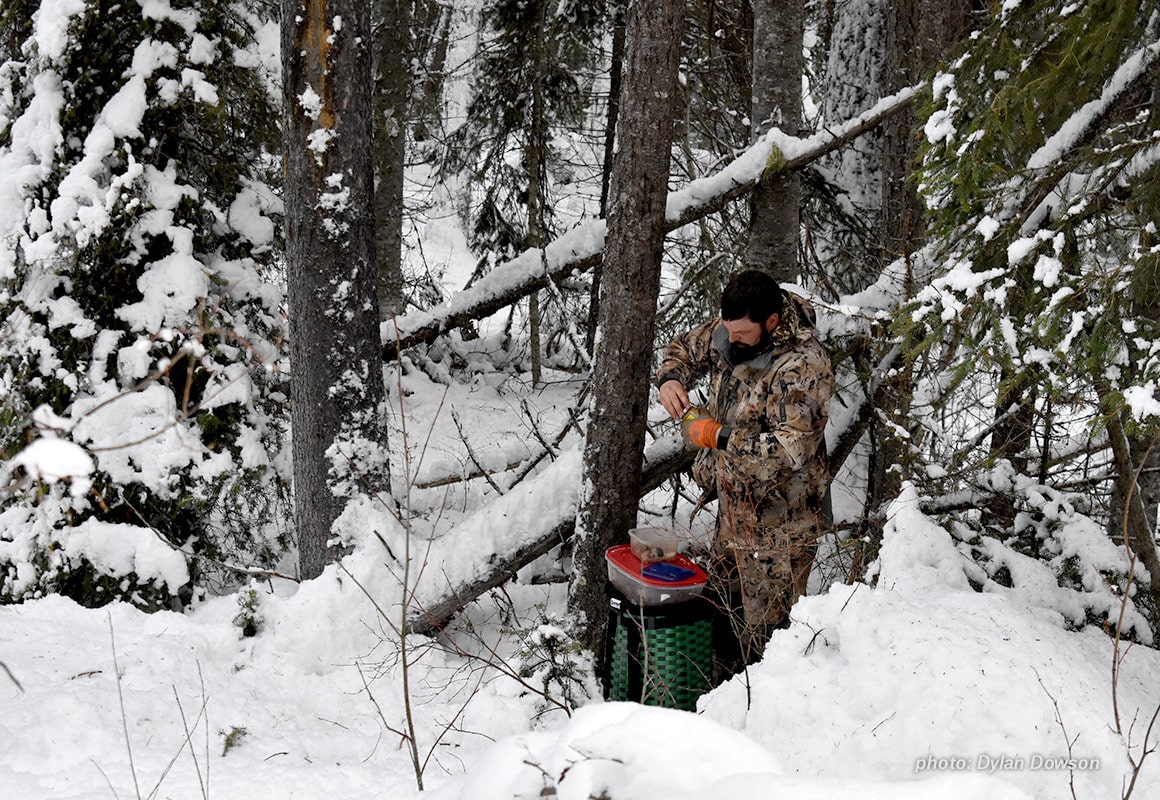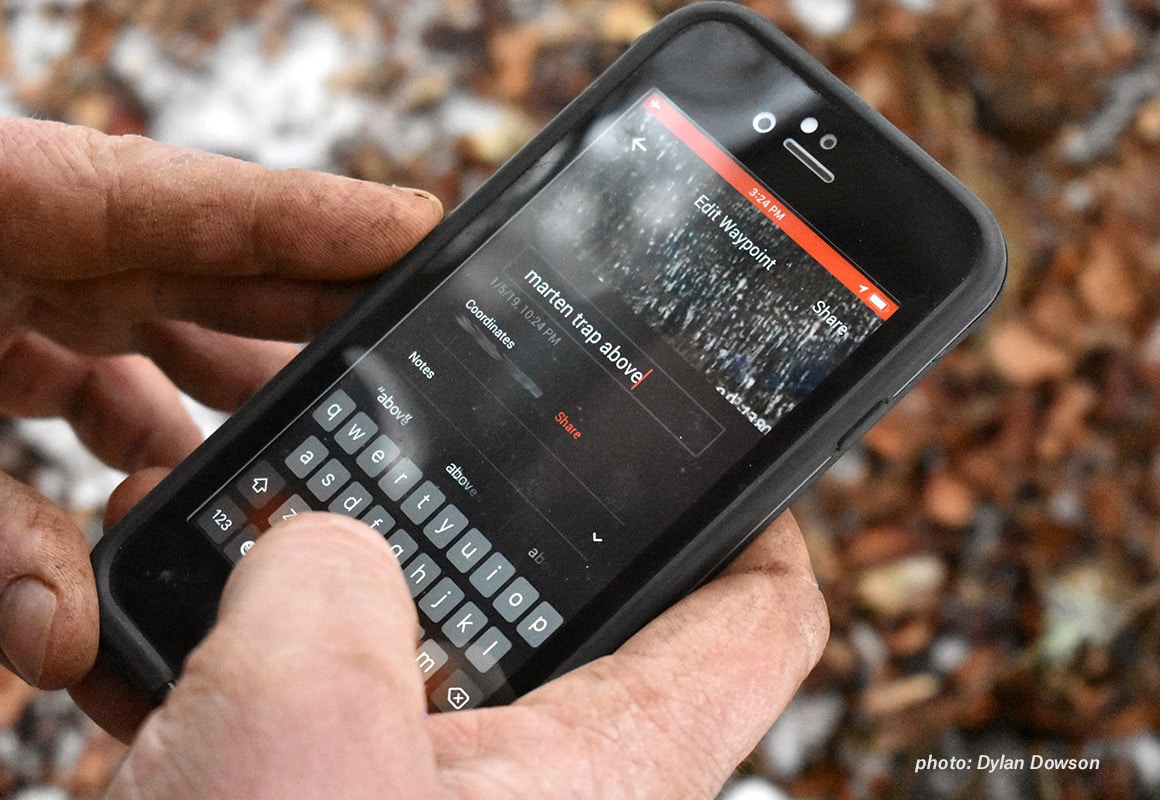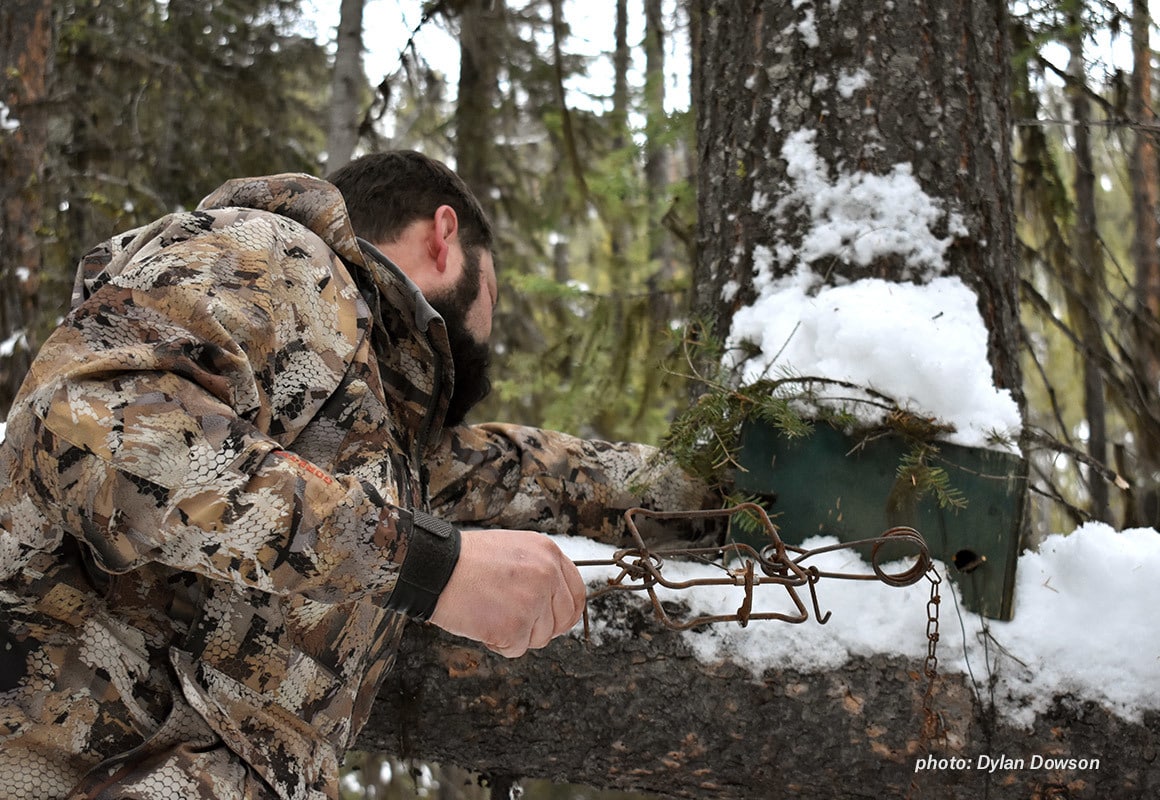Maine biologist Jeremiah Wood shares how he uses the onX Hunt App for trapping.
Having the right tools at hand can make the difference between a long, unproductive trapping season and successful time in the woods. Jeremiah Wood, a biologist for the state of Maine, shares how he best uses the onX Hunt App for trapping success.
(And, if you missed them, be sure to read Jeremiah’s other trapping posts, Five Reasons to Reconsider Trapping and Types of Hunting Traps: Where, When, Why and How.)

“A properly-working GPS is one of the most critical components of running a successful modern trapline. Many trappers don’t use GPS, but I’ve found it to be a huge asset for increasing my success rates. Each fall I run a big woods trapline for marten, fisher and weasels in remote northern Maine. I’m setting out traps at more than fifty locations scattered throughout a complex set of logging roads, and it’s critical to record the location of each trap. GPS allows me to mark and find trap locations, space sets out efficiently and interpret land features most likely to hold furbearers.
The Garmin Oregon 450 has been my go-to GPS for trapping in recent years. It’s rugged, dependable and easy to use. But I’m always looking to try new things and improve, and after using the onX Hunt App on my phone for a few months, I decided to give it a shot on the trapline. If nothing else, I figured it might compliment my Garmin unit and since my phone is always in my pocket, it could save me from carrying an extra GPS around all the time.
The big woods trapline has come to an end for the year, and I’ve been impressed by how well my smartphone works as a GPS using the onX Hunt App. In fact, I might even consider leaving my GPS in the truck and relying on the phone while trapping in the future.
Here’s why:
1) It’s Quick and Easy
The onX Hunt App is so simple to use. Everything I’ve done with GPS units in the past can be done in the app with simple tapping and swiping on the phone screen. In areas where you have cell service, the satellite imagery, topo or hybrid base layers (your choice) show up wherever you scroll and with just a couple of taps, you can download aerial maps over wide swaths of ground for offline use.

2) The Screen is Awesome
My GPS is durable, accurate and dependable, but the screen leaves a lot to be desired. It’s small and dark, and the touch screen is fairly clunky. But when you pull up an aerial map on the phone screen it’s big and bright, with incredible resolution.
3) It Syncs
Of all of the reasons to use the onX Hunt App on the trapline, the fact that it syncs to the cloud via the onX Hunt Web Map is by far the best. With so many trap locations to keep track of, one of my biggest fears is losing my GPS or having it malfunction. Sure, I have physical descriptions and landmarks written down, but pinpointing every trap without the GPS would be a time-consuming task.
I back up all my waypoints from GPS to a computer periodically, but that requires downloading software, hooking up to the computer and manually transferring everything. It takes a lot of work, and both hardware and software can fail. But with onX, all the waypoints I mark on my phone automatically sync to the web each time I re-enter cell service. No extra work, no headaches, no worries. How much easier can it get?
Whether it be for scouting, marking traps or general navigation, an active trapline can benefit greatly from GPS. These days we’re fortunate enough to have smartphones that can work just as well—or even better—than many GPS units. I may never stop using my GPS unit for some things, but with the onX Hunt App, I’m finding reason to use my smartphone in its place more and more often.”

Curious about trapping? Want to learn more? Read Jeremiah’s other trapping posts, Five Reasons to Reconsider Trapping and Types of Hunting Traps: Where, When, Why and How.
Jeremiah is a biologist with the State of Maine and runs Trapping Today, a website dedicated to providing information and entertainment to the modern trapper. Find more from him at www.trappingtoday.com.